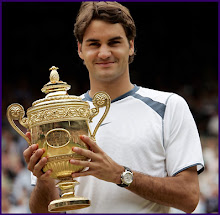PROBLEM
You use an abbreviated motion on your ground strokes. You may have a short backswing or follow-through that results in a slapping or blocking motion. Your shots may make it over the net, but they lack power, spin, control, and consistency.
SOLUTION
To get a full swing on your ground strokes, pretend the butt of your racquet is a camera, and that you have to take two pictures with it in order to achieve a proper motion. The first picture is of the incoming ball. If you can put your racquet in a position to take this picture, that means you’ve prepared your racquet early enough and are using an adequate backswing, with your wrist laid back and your arm ready to drive the racquet head at the ball. After you make contact, allow your arm to fully extend to where you want the ball to go and follow through. To complete your stroke, take a second picture with the butt of your racquet, this time of your intended target. A lot of players stop their strokes right after contact or come straight across their bodies. Make sure that, besides having the butt pointing at the right spot, the face of your racquet is parallel to the side fence and not pointing to the ground or sky. This should help you achieve a successful stroke.

